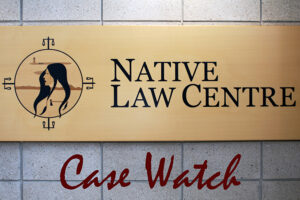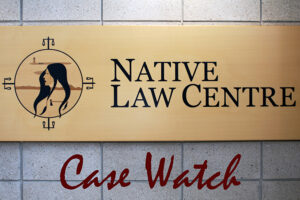Motion granted. The two applications for judicial review are dismissed. The applicants have not established standing. Judicial reviews are not an appropriate forum for how the dispute regarding s 35 Aboriginal rights is framed.
In a bid to enhance winter tourism in northern New Brunswick, the Province decided to improve the snowmobile trail system, by proceeding with the development of a snowmobile grooming hub in 2015 at Mount Carleton Park. The two judicial review applications arose in the context of this decision made by the Province. The initial judicial review focused on whether the Province’s decision to develop the grooming hub was in violation of the Province’s Parks Act and to first conduct an environmental impact assessment. The second judicial review application challenged the Province’s decision to exempt work on, and the replacement of, two bridges from a subsequently conducted environmental impact assessment. In addition, all of the judicial review applicants alleged a breach of Aboriginal and Treaty rights. These lands were, according to the judicial review applicants, never ceded by treaty.
Central to this dispute is the Mascarene Treaty of 1725/26, the so-called Peace and Friendship Treaty. The Mascarene Treaty represented a negotiated end to the Dummer’s War between the British and the Wabanaki Confederacy. The Eastern Wabanaki Confederacy are a confederation of First Nation and Native American people from (present day) Eastern Canada and the State of Maine, USA. The Mascarene Treaty of 1725/26 was signed by the numerous traditional chiefs of the Eastern Wabanaki Confederacy. This included traditional chiefs of the Wolastoqewiyik (Maliseet) peoples located in present day New Brunswick. The Wabanaki Confederacy is said to also be in the process of “being rebuilt”.
Having carefully considered the substantive submissions of the parties and having reviewed all of the numerous authorities in the context of both Aboriginal and Treaty rights litigation across Canada, the Court concluded that the Province’s motion to dismiss the two applications for judicial review will succeed. It was determined the applicants on judicial review have not established standing, which is fatal to both judicial reviews. As well, judicial reviews are not an appropriate forum to determine the existence of an Aboriginal section 35 rights-bearing collective.
Counsel for the judicial review applicants acknowledges these to be unique circumstances, however, it does not require this Court to adopt unique and novel legal constructs. “Aboriginal rights exist within the general legal system of Canada” (R v Van der Peet, [1996] 4 CNLR 177 [R v Van der Peet]). There is ample and longstanding authoritative support for the notion that both Aboriginal and Treaty rights are collective or communal in nature (Haida Nation v British Columbia (Minister of Forests), [2005] 1 CNLR 72). While such rights may be exercised, in certain circumstances, by individual members of the community, these rights remain collective or communal (R v Powley, [2003] 4 CNLR 321). While the judicial review applicants initially based their claims against the Province over its failure to consult them, to a great degree, on “Aboriginal rights”, they now premise their relief on a breach of the Mascarene Treaty of 1725/26.
In the matter before this Court, the judicial review applicants believe a fair interpretation of the wording of the Mascarene Treaty allows for them to seek relief by way of judicial review for a breach of the Maliseets people’s rights. While they do not seek any declaratory relief specifically recognizing them as an authorized Aboriginal or Treaty rights holder for the Maliseet Nation, they do seek an order against the Province requiring it to fulfill a duty to consult prior to further work on the project continuing. Ostensibly, the judicial review applicants rely on the wording “any Indian” found in the Mascarene Treaty of 1725/26 so as to suggest they have “constitutional standing” to proceed. While creative, there is no merit to this argument. Even if this Court were satisfied with the specific interpretation of the wording found in the Mascarene Treaty of 1725/26, and in the manner now espoused by the judicial review applicants, there is an absence of evidence any of the judicial review applicants actually or actively pursued the very rights alleged to have been impacted and at the allegedly affected parts of Mount Carleton Park.
Even if the Court is in error with respect to standing, this dispute, as framed, is not appropriate for judicial review. A judicial review application should not be turned into a hearing de novo or an appeal. The Court’s role on judicial review is not to consider the matter anew or adjudicate conflicting expert opinions based on new evidence, but to review the decision on the basis of the material before the decision-maker. Aboriginal rights must be proven by tested evidence; they cannot be established as an incident of administrative law proceedings that centre on the adequacy of consultation and accommodation. To permit this would invite uncertainty and discourage final settlement of alleged rights through the proper processes. Aboriginal rights claims require that proper evidence be marshalled to meet specific legal tests in the context of a trial (R v Van der Peet; Delgamuukw v British Columbia, [1998] 1 CNLR 14; and Mitchell v MNR, [2001] 3 CNLR 122).
There are a few cases where standing was made an issue. In those few cases, it was held that the Aboriginal party must show it, in fact, has recognized authority to represent an Aboriginal collective, or portions thereof, for purposes of section 35 constitutional reconciliation or litigation. In this matter, the judicial review applicants argue that they need not do so as the Mascarene Treaty of 1725/26 expressly provides for their standing. Any Treaty interpretation, especially cases with such potentially broad application as in this case, must take into account all of the Aboriginal parties to the Treaty and the government(s). The judicial review applicants have chosen to proceed, not only without evidence of current representational authority for the collective Maliseet Nation, but they have done so in a forum to the exclusion of numerous recognized Maliseet entities, such as the First Nations communities in New Brunswick who quite likely may be affected by this proceeding and the relief sought.




